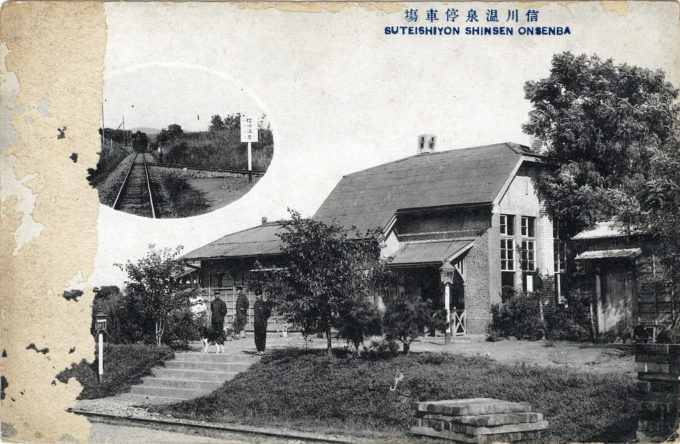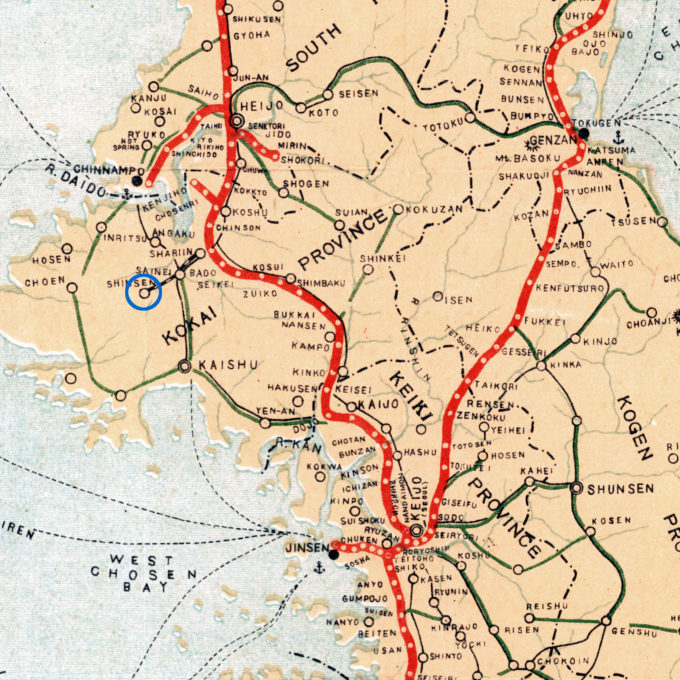
Shinsen Onsen Station, Chosen (Korea), c. 1930, gateway to a popular natural hot springs district in Colonial Korea. Present-day Sinchon, Korea (DPRK). The railway station pictured was completed in 1921 on the privately-owned Kōkai-sen (Hwanghae Line) connecting Shinsen with Heijo (Pyongyang).
See also:
Onsen (hot springs) culture.
Dogo Onsen, Matsuyama (Iyo District), Shikoku, c. 1910.
The Natural Sand Baths and Onsen, Beppu, c. 1910-1930.
Shinsen Onsen
“Railway: Heijo-Shingishü Line from Heijo (Pyongyang) to Shari-in, thence by light railway. (20 m.; 2nd cl., ¥1.20) to Shinsen-onsen.
“Shinsen (alt. 40 ft.; population, 100) has 3 alkaline carbondioxated springs, clear and transparent. The water is tasteless, with a slight alkaline odor. Temperature at the baths, 101.3° F., average. According to an analysis made in 1908, the chemical substances contained in 1 kilogram of the water of these springs are approximately :
Substance
Chlorine
Sucilic acid
Sulphuric acid
Magnesia
Lime
Grams
0.0672
0.0650
0.0151
0.0026
0.0050“Besides these, there is a small quantity of carbonic acid and traces of nitrites and ammonia.
Map: Shinsen Station location (present-day Sinchon), circled in blue, ca. 1930, southwest of Heijo, Colonial Chosen (present-day Pyongyang, North Korea).
“The water is so clear and palatable that the natives drink it and use it for cooking food. It is particularly good for washing as it cleanses white clothing without the use of soap or caustic soda. Korean women come long distances to wash clothing in the spring water and women and girls with baskets of snowy-white clothing on their heads is a daily sight on all roads in the neighborhood of Shinsen.
“Inns: One Japanese, the Nemoto-ryokan (¥2-3, Japanese plan) — with private baths; 12 Korean inns. One public bath-house. About 47,000 visitors annually.
“Back of Shinsen, which is situated on a dike-protected river, are low hills, about 4 m. away, which shelter it like a screen. Close by is a pond where visitors enjoy boating and good fishing. In the neighborhood is a fish hatchery. The soil of the country is particularly adapted to fruit growing. Some Shinsen pears weigh about two pounds!”
– “Mineral Springs in Chosen (Korea)”, published by the Imperial Government Railways, The Hot Springs of Japan, 1922


